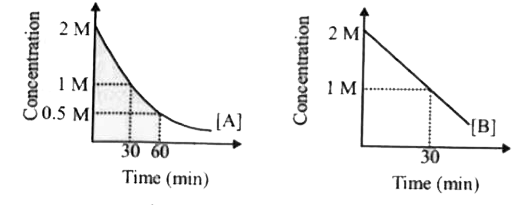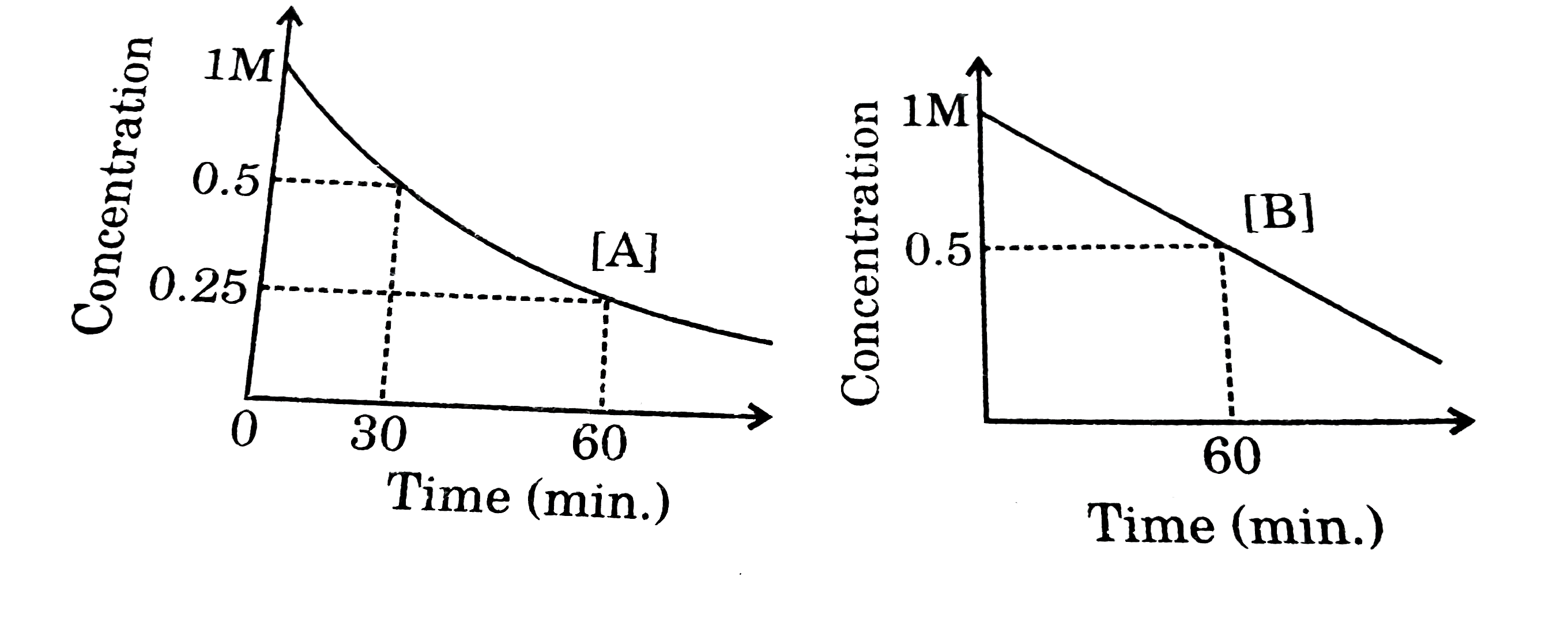For the reaction
(i) Ak1−−→P
(ii) BkII−−→Q, following observation is made.

Calculate kIkII, where kI and kII are rate constant for the respective reaction.
2.303
1
0.36
0.693
The correct Answer is:D
kI=0.69330
kII=a2t1/2=22×t1/2=1t1/2=130
kIkII=0.69330×1=0.693
Topper's Solved these Questions
- CHEMICAL KINETICS Book:DISHA PUBLICATIONChapter:CHEMICAL KINETICS Exercise:EXERCISE 1 : CONCEPT BUILDER (TOPICWISE)(TOPIC 3 : Theories of Rate of Reaction)
Explore 17 Videos
- CHEMICAL BONDING AND MOLECULAR STRUCTURE Book:DISHA PUBLICATIONChapter:CHEMICAL BONDING AND MOLECULAR STRUCTURE Exercise:EXERCISE-2: CONCEPT APPLICATOR
Explore 30 Videos
- CHEMISTRY IN EVERDAY LIFE Book:DISHA PUBLICATIONChapter:CHEMISTRY IN EVERDAY LIFE Exercise:Exercise
Explore 88 Videos
Similar Questions
Knowledge Check
For the reaction
(i) AkI−−→P
(ii) BKII−−→Q, following observation is made.

Calculate k1kII, where kI and kII and rate constant for the respective reaction.A2.303B1C0.36D0.693For the reactions (i) AKI−−→P and (ii) BKII−−→Q, following observation is made.

Calculate KIKII where KI and KII are rate constants for the respective reaction.A2.772B1C0.36DNone of theseFor the processes K+(g)I−−→K(g)II−−→K(s)
Aenergy is released in (I) and absorbed in (II)Benergy is absorbed in (I) and released in (II)Cenergy is absorbed in both the processesDenergy is released in both the processes
A consecutive reaction, AK1−−→BK2−−→C is characterised by:
View SolutionIf a unimolecular reaction, A(g)→ Products, takes place according to the mechanism
(I)A+Ak1⇐===⇒k−1Aa+A
(II)Aa−−→k2P
where k1, k−1 and k2 are the rate constants and P,A and Aa stand for product molecule, normal molecule of reactant and activated molecules of reactant and activated molecules of reactant respectively.
For the reaction scheme, X+Ykf⇐===⇒kbZ, Y+Zk−−→T, the rate equation for the formation of T will be
View SolutionIf a unimolecular reaction, A(g)→ Products, takes place according to the mechanism
(I)A+Ak1⇐===⇒k−1Aa+A
(II)Aa−−→k2P
where k1, k−1 and k2 are the rate constants and P,A and Aa stand for product molecule, normal molecule of reactant and activated molecules of reactant and activated molecules of reactant respectively.
The order 'n' initial concentration a0 and time of half reaction t1/2, for a reaction are related as
View SolutionIf a unimolecular reaction, A(g)→ Products, takes place according to the mechanism
(I)A+Ak1⇐===⇒k−1Aa+A
(II)Aa−−→k2P
where k1, k−1 and k2 are the rate constants and P,A and Aa stand for product molecule, normal molecule of reactant and activated molecules of reactant and activated molecules of reactant respectively.
Which of the following expressions are correct?
View SolutionA reaction is represented by Ak1−−→B (slow ) and A+Bk2−−→C (fast) where k1 and k2 are the ratge constants of two steps. The rate of production of C will be given by
View Solution
